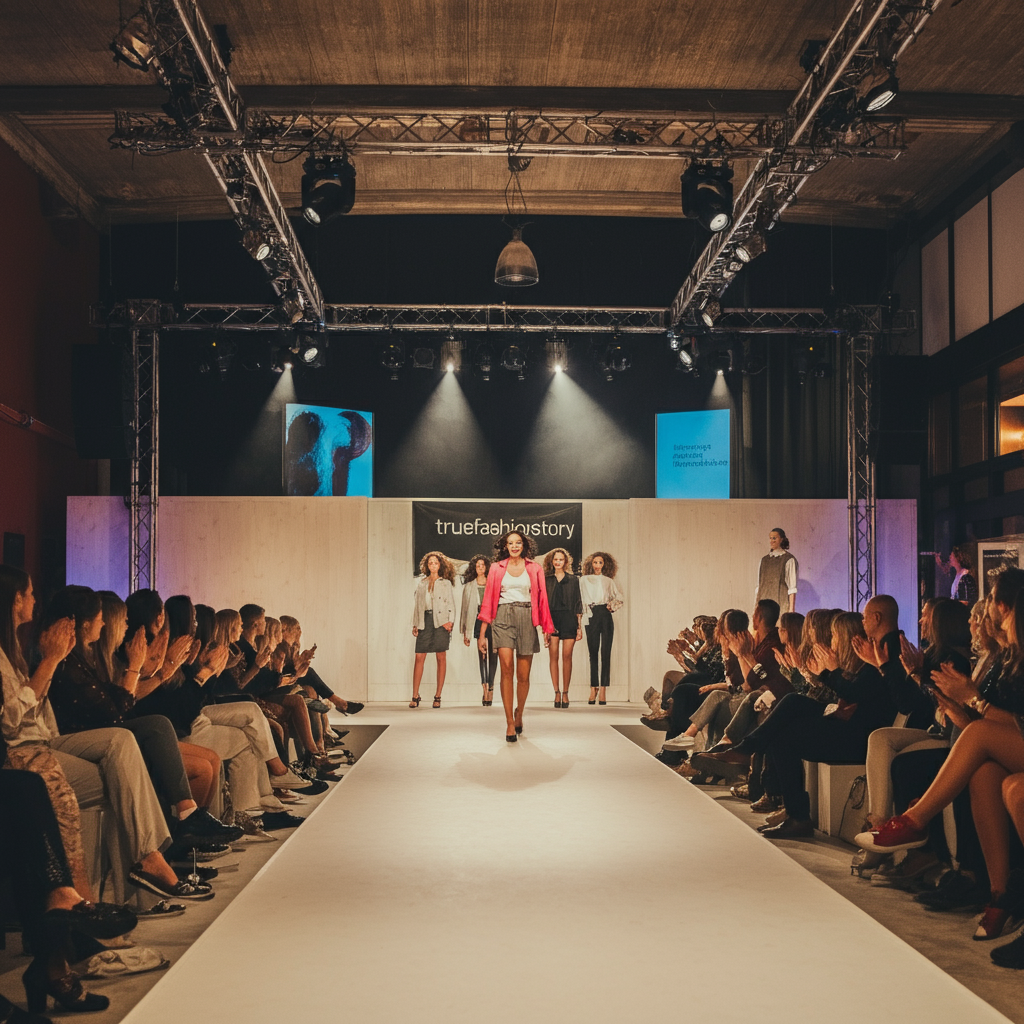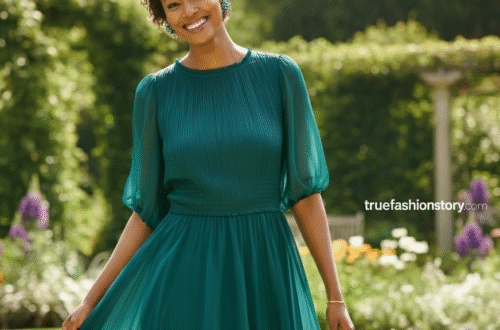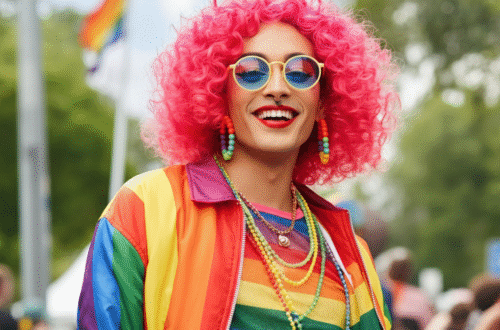Fashion shows are dazzling events that bring clothing to life. They are where designers showcase their latest collections to the world, setting trends that influence what we wear for seasons to come. More than just a parade of models on a catwalk, these events are a powerful blend of art, business, and culture. They create a spectacle that captures the imagination, telling a story through fabric, silhouette, and style. From the exclusive runways of Paris and Milan to digital presentations you can watch from your couch, fashion shows are an essential part of the industry’s ever-spinning wheel.
This guide will walk you through everything you need to know about these iconic events. We will explore their history, understand the different types, and see who makes them happen. We’ll also peek behind the curtain to understand their purpose and see how they are changing in the modern world.
Key Takeaways
- Fashion shows are the primary way designers present new collections to buyers, the press, and the public.
- The concept evolved from intimate “parades of fashion” in the 19th century to the global spectacles we see today.
- Major fashion weeks in New York, London, Milan, and Paris set the tone for the global industry.
- The roles of designers, models, stylists, and producers are all crucial to a successful show.
- Technology and a focus on sustainability are rapidly changing how fashion shows are produced and consumed.
The History of Fashion Shows: From Salons to Spectacles
The idea of showcasing new styles is not new, but the organized fashion show is a more recent invention. Before the mid-1800s, designers would use dolls dressed in miniature versions of their garments to show new styles to clients far away.
The Father of Haute Couture
The first person credited with using live models was Charles Frederick Worth, an English designer who dominated Parisian fashion in the late 19th century. He is often called the “father of haute couture.” Instead of letting clients dictate designs, he created his own collections and presented them on live models in his salon. These early presentations were intimate and exclusive, reserved for wealthy clients. It was a revolutionary way to sell clothes, establishing the designer as a creative artist rather than just a dressmaker.
The Rise of the Runway
As the 20th century began, these presentations grew. Retailers in the United States started hosting their own shows to attract customers. The first New York Fashion Week (then called “Press Week”) was held in 1943. It was created to draw attention away from French fashion during World War II, when industry insiders couldn’t travel to Paris. This event was a huge success and helped establish American designers on the global stage. Over the decades, fashion shows transformed from quiet salon presentations into the elaborate, theatrical productions we know today, complete with music, dramatic lighting, and celebrity guests.
What Is the Purpose of a Fashion Show?
While they look like glamorous parties, fashion shows serve critical business functions. They are a massive investment for a brand, so the return needs to be worth it.
Driving Sales and Attracting Buyers
The most fundamental purpose of a fashion show is to sell clothes. The primary audience for many shows, especially during fashion week, consists of retail buyers from department stores, boutiques, and online shops. These buyers decide which pieces from the collection they will stock in their stores for the upcoming season. A successful show can lead to millions of dollars in orders, making it a designer’s most important sales appointment of the year. The looks presented help buyers understand the designer’s vision and identify key pieces that will appeal to their customers.
Generating Media Buzz and Brand Image
Fashion shows are powerful marketing tools. The press, including magazine editors, bloggers, and influencers, attend to report on the latest trends. Photos and videos from the runway are shared across the globe in minutes, creating instant buzz. A show is a designer’s chance to tell a story and reinforce their brand identity. Is the brand edgy and rebellious? Romantic and dreamy? Minimalist and modern? The choice of venue, music, models, and styling all work together to communicate this message. A memorable show can define a brand’s image for years. You can find more insights on how brands build their identity on our blog at truefashionstory.comBlog.
Setting Future Trends
What appears on the runway today will be in stores six months from now. Fashion shows are the industry’s trend-setting engine. Editors and buyers identify recurring themes—a specific color, a type of fabric, a new silhouette—and declare them the “trends” for the upcoming season. These trends then trickle down from high fashion to mainstream retail, influencing everything from fast fashion to home decor. The runway is a crystal ball that offers a glimpse into the future of style.
The Different Types of Fashion Shows
Not all fashion shows are the same. They vary in scale, format, and purpose. The type of show a designer chooses depends on their budget, their brand, and what they hope to achieve.
Haute Couture Shows
Haute couture, which is French for “high sewing,” represents the pinnacle of fashion. These shows, held exclusively in Paris, feature garments that are custom-made by hand from the most expensive materials. Each piece is a work of art, and only a select few design houses meet the strict criteria to be considered a couture house. The audience is small, consisting of private clients, celebrities, and the most elite fashion press.
Ready-to-Wear (Prêt-à-Porter)
Ready-to-wear is the bread and butter of the fashion industry. These are the clothes that are produced in standard sizes and sold in stores. The major ready-to-wear fashion weeks happen twice a year in New York, London, Milan, and Paris. These shows are still exclusive but have a much broader audience of buyers and media. This is where most of the trends that we see in everyday fashion originate.
Resort/Cruise Collections
Originally designed for wealthy clients vacationing in warm climates during the winter, resort collections have become a major commercial season. These pre-collections hit stores between the main fall/winter and spring/summer seasons. The shows are often held in exotic locations, adding to their appeal and creating incredible marketing moments for the brand.
Digital Fashion Shows
The rise of the internet and social media has led to the growth of digital fashion shows. Instead of a physical runway, designers present their collections through high-quality films, lookbooks, or even virtual reality experiences. This format became essential during the global pandemic but has remained popular for its accessibility and creative potential. It allows brands to reach a global audience instantly without the massive expense of a physical event.
Key Players: Who Makes a Fashion Show Happen?
A successful fashion show is a massive team effort. Dozens, sometimes hundreds, of professionals work together behind the scenes to create a seamless 15-minute presentation.
- The Designer: The creative visionary. The entire show is built around their collection and their story.
- The Stylist: Works with the designer to create the final looks, choosing accessories, shoes, and layering pieces to bring the collection to life on the runway.
- The Models: The walking canvases who present the clothes. Casting directors work to find models who fit the brand’s aesthetic.
- Hair and Makeup Artists: Create the beauty looks that complement the clothes and the show’s theme.
- The Producer: The project manager of the show. They handle everything from the budget and venue to lighting, sound, and seating charts.
- The PR Team: Manages the guest list, sends out invitations, and ensures the show gets maximum media coverage.
The Big Four: A Tale of Four Cities
The international fashion calendar revolves around four key cities. Each has its own distinct personality and role in the industry.
|
Fashion Week |
City |
Key Characteristics |
Famous Designers |
|---|---|---|---|
|
New York |
USA |
Commercial, sportswear, modern and clean aesthetics. |
Ralph Lauren, Michael Kors, Marc Jacobs |
|
London |
UK |
Experimental, avant-garde, home to young, emerging talent. |
Alexander McQueen, Burberry, Vivienne Westwood |
|
Milan |
Italy |
Luxurious, glamorous, known for expert craftsmanship and high-quality textiles. |
Prada, Gucci, Versace, Fendi |
|
Paris |
France |
The home of haute couture, elegant, artistic, and historically significant. |
Chanel, Dior, Saint Laurent, Louis Vuitton |
The Evolution of the Runway: What’s Next for Fashion Shows?
The world of fashion shows is constantly changing. Two of the biggest drivers of this evolution are technology and sustainability.
The Impact of Technology
Social media has completely transformed the fashion show. What was once an exclusive, industry-only event is now broadcast live to millions of people around the world via Instagram, TikTok, and YouTube. This has democratized fashion, allowing consumers to see collections at the same time as editors. Brands are also experimenting with “see now, buy now” models, where customers can purchase items from the collection immediately after the show, closing the gap between runway and retail.
A Greener Runway
The fashion industry is facing growing pressure to become more sustainable. Traditional fashion shows can be incredibly wasteful, with elaborate sets that are used for only one night and international travel contributing to a large carbon footprint. In response, many designers are rethinking their approach. Some are opting for smaller, more intimate presentations. Others are using recycled materials for their sets or hosting carbon-neutral events. Digital shows also offer a lower-impact alternative. This shift reflects a broader industry conversation about how to make fashion more responsible.
Conclusion
Fashion shows are so much more than just a walk down a runway. They are a dynamic intersection of commerce, art, and culture. From their origins in exclusive Parisian salons to today’s global, digitally-streamed spectacles, they have evolved to reflect the times while remaining the beating heart of the fashion industry. They launch careers, dictate trends, and create moments of beauty and fantasy that inspire us all. Whether physical or digital, grand or intimate, the fashion show’s power to tell a story and shape the future of what we wear remains as strong as ever.





